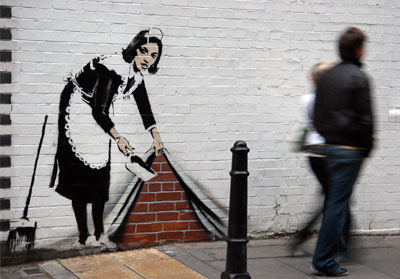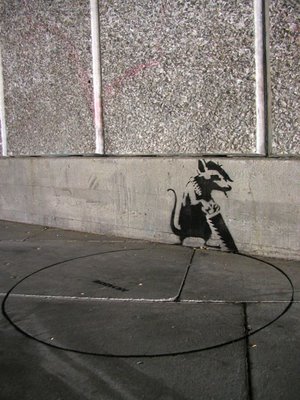On a personal level, I cannot stand the scribbles ravaging the landmark of my adopting city which I have to eyewitness everyday between home and office. Below is an extreme example of annoying wreckage which has been inflammatorily accomplished, but intentionally labelled *Vandalism*, almost in an attempt of asking for absolution through the act of acknowlegment.
I feel very conservative about the historical heritage and the residential areas of a city. In this respect, I own a feng shui vision of living spaces as essentially harmonic, safe and clean. On the other hand, I do love metropolitan sub-cultures and their mix of street styles and provocative contrasts.
Back to my university years, I have cohabited for one year with him, a talented graffiti artist, of whom I have appreciated his portfolio of works and was fascinated by his modus operandi: usually at night and always in incognito.
Graffiti artists have a story to tell and a message to disseminate in the most direct, accessible, penetrating, democratic and unfiltered manner. Although they don’t necessarily aim to communicate beauty as many art theories have aimed to in the course of (art) history, graffiti in their best form still remain somehow a way to embellish urban spaces by making them unique.
It is in this mood that Banksy, Britain's most celebrated graffiti artist, spray-painted the streets of London with his humoristic yet subversive creations which are technically based on a neat black & white style and on the so-called coup d’oeil: his drawings deceptively camouflage themselves within the surrounding urban area, creating an illusion of reality, like the image below:
... or they sometimes pose themselves as a continuation of the real space:
Other times as representatives of a parallel underground world from which from time to time they emerge to tickle a narcotised city:







No comments:
Post a Comment